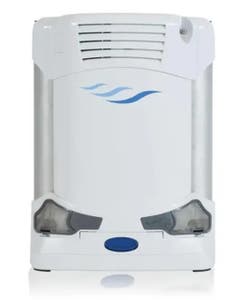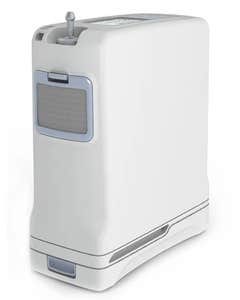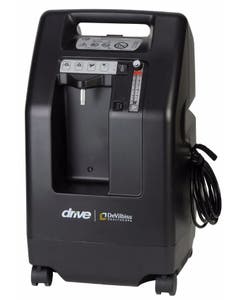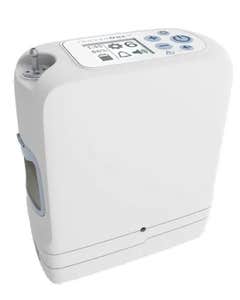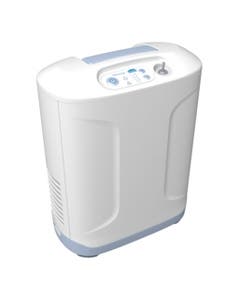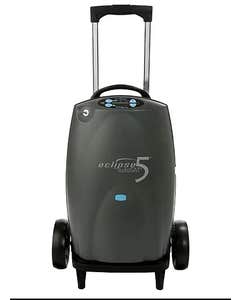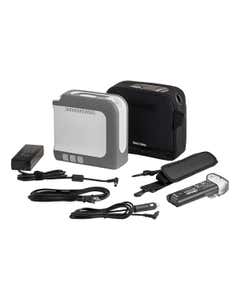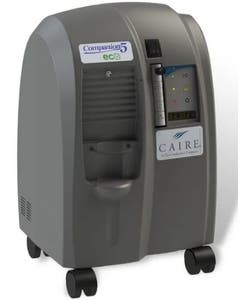Supplemental oxygen provides treatment for respiratory illnesses such as asthma, COPD, and other lung diseases that compromise lung health. Doctors will prescribe it when patients have trouble breathing on their own. By providing pure oxygen, this type of treatment helps open up airways for patients struggling to breathe normally.
Using supplemental oxygen allows many patients with debilitating ailments to find well-being day to day. For periods of time, it can also restore healthy breathing which can help people get back to living their lives. Patients are able to use it at home or on the go, giving flexibility and freedom to those managing a respiratory illness.

Who Needs Supplemental Oxygen?
Patients with a range of respiratory illnesses rely on supplemental oxygen for healthy breathing. It may be prescribed for short-term health issues such as bronchitis or for long-term health problems such as COPD or asthma.
All supplemental oxygen must be prescribed by a doctor. Most doctors will recommend supplemental oxygen when patients are struggling to breathe or if blood oxygen levels are very low. Doctors may check blood oxygen levels regularly to determine the success of prescribed supplemental oxygen.
When Do You Need Supplemental Oxygen?
Because supplemental oxygen will be prescribed for both short-term and long-term respiratory needs, it is usually up to the doctor’s discretion to decide on supplemental oxygen. Patients having difficulty breathing may rely on it due to respiratory illness. More often a doctor will specifically prescribe oxygen when blood oxygen levels fall below 89 percent, or the arterial oxygen pressure falls below 60 mmHg — whether during rest, activity, sleep or at altitude. Blood oxygen levels ensure saturation of oxygen reaches all the cells and tissues of the body.
How Does Supplemental Oxygen Work?
Supplemental oxygen uses either an oxygen tank or an oxygen concentrator to deliver pure oxygen through the mouth and nose. Pure oxygen helps the lungs breathe and also ensures oxygen saturates throughout the body.
Your doctor will prescribe a flow setting to ensure you are getting enough pure oxygen, but not too much that it can be harmful. Too much oxygen can cause dizziness and other side effects. Regulating the amount of oxygen during any oxygen therapy session is in the prescription.
How Much Does Supplemental Oxygen Cost?
Medical insurance may cover some of your costs. If not, you have to look comparatively at the costs between oxygen tanks and the investment of an oxygen concentrator. Oxygen tanks need to be replenished regularly, which can add up.
Oxygen concentrators do not need to be replaced but use a lot of electricity, which can raise your household utility bill. It’s important to compare your costs and see what works for you when purchasing supplemental oxygen.
Can Supplemental Oxygen Be Harmful?
Like anything, too much of even a good thing can be bad. It can be harmful. Too much pure oxygen can make you sick. That’s why it is important to follow the recommendations of your doctor in terms of usage. Your doctor will prescribe both the flow settings and frequency of your oxygen use to prevent overuse.
Too much pure oxygen can cause oxygen toxicity. Your oxygen level should not go above 110 mmHg. A normal, healthy blood oxygen level should be between 95 and 100 percent. When that level is up above the threshold, you can experience chest pains, dizziness, and other adverse symptoms.
Does Supplemental Oxygen Help COPD?
COPD is one of the primary respiratory illnesses managed with supplemental oxygen. Using oxygen therapy daily helps COPD patients to breathe more easily and allows them to live fairly normal lives. Portable oxygen concentrators give CPOPD patients the freedom to leave the house for errands and even go on vacations.
While oxygen tanks may limit freedom of movement, oxygen concentrators give many patients the ability to go out into the world without worrying about their oxygen therapy.
How Long Can You Live on Supplemental Oxygen?
Supplemental oxygen is a helpful treatment for many respiratory illnesses. However, longevity is not defined by the treatment. It can help improve well-being and may even allow a more active lifestyle but will not cure a chronic illness or extend life span. The severity of an illness determines mortality. A patient with any illness can follow doctor’s orders to sustain life and well-being, including following recommendations for usage of supplemental oxygen.
Supplemental Oxygen and COVID-19 Patients
Why Do COVID-19 Patients Need Supplemental Oxygen?
In some instances, COVID-19 patients may require supplemental oxygen to treat their illness. COVID-19 attacks the lungs, causing a severe cough and difficulty breathing. If the virus has severely impaired lung function, a patient may need oxygen to breathe normally. Some severe cases may even require a ventilator to breathe as supplemental oxygen isn’t enough. Not all cases of COViD-19 will require additional help, but a doctor may recommend it as a way to ease symptoms of the virus.
How Much Oxygen Does A COVID-19 Patient Need?
Every case of COVID-19 is unique. Some patients will experience no symptoms of the disease at all, while others will become severely ill. Others may end up in the hospital and require ventilation to assist with breathing.
Supplemental oxygen is a useful aid to anyone recovering from COVID-19. It helps the injured lungs function and reduces the severity of symptoms for mild cases of COVID-19. A doctor will recommend the flow setting and frequency of supplemental oxygen use based on each individual patient.
Do you need an Oxygen Concentrator for COVID-19?
Because not every case of COVID-19 requires supplemental oxygen, it will be up to your doctor to determine if you need that treatment. If treatment is long-term, an oxygen concentrator is a preferred option over oxygen tanks. An oxygen concentrator is a one-time investment, while oxygen tanks need to be replenished when they run out.
Most mild cases of COVID-19 will not require extended use of supplemental oxygen and a concentrator is probably only necessary if long-term lung damage has occurred due to the illness.
Things to Keep in Mind While Buying an Oxygen Concentrator
Check OPI (Oxygen Purity Indicator)
When purchasing an oxygen concentrator make sure it includes an OPI or oxygen purity indicator. This gauge will help ensure you are receiving a high level of oxygen purity. As an oxygen concentrator must convert ambient air into pure oxygen, you want to be able to check that level of purity.
Check Capacity of Oxygen Concentrator
Oxygen concentrator capacity is defined by the liters per minute of oxygen that is delivered at a given time. When selecting an oxygen concentrator, you have your choice between low flow and high flow machines. You should follow the prescription given by your doctor to determine which type of machine you will need.
Where Can I Buy an Oxygen Concentrator?
You can find oxygen concentrators and accessories at most medical equipment retailers. You can shop online for all your oxygen concentrator needs. Find both home and portable oxygen concentrators at The Oxygen Concentrator Supplies Shop. Speak to our knowledgeable staff to help you select the best oxygen concentrator based on your prescription. Call 888-941-1688.



